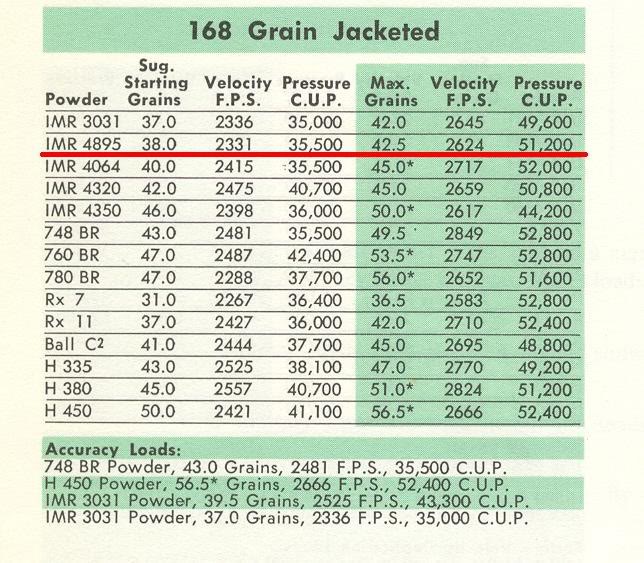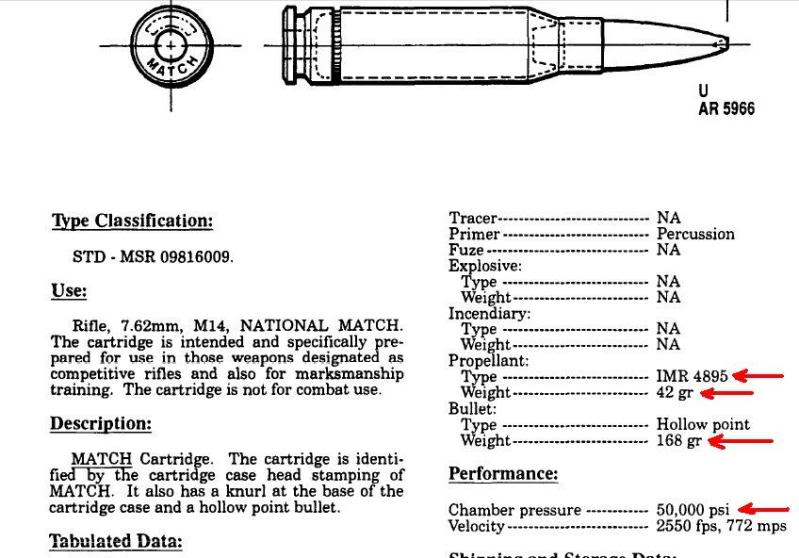"Very similar"?
Not much similarity in locking lug placement or methods of construction, or heat treatment methods, very different in all these major points. Not at all like the Commision 1888 model discussed earlier, ans not of the same bore size, so downloaded ammo was not needed. It also wasn't even around when US manufacturers began producing 8mm sporting ammo.
US cartridge companies haven't "downloaded " ammo for the Lee Enfields, velocity and energy levels closely match those of the MKVII, they have endevorered to develop propellants that produce this power level with the least pressure possible.
Best check the fit of the bolt to the rear receiver tracks, since the bent pin is a warning sign. It may have spread the receiver when proofed or at a later date after many rounds had been fired. Since you got it used the receiver may have been put in a vise to press it back to shape by a previous owner, or a new oversized bolt body fitted and numbered to the rifle.My .308 converted LE No. 5 is proofed for .308 Win. The otherwise unmarked receiver was proofed in Britain(where it was clearly used regularly) and again in Germany
.
As Laidlercorrectly observed, the pin holding the rear sight bolt was damaged (I bent it ... and then lost it while fitting a Parker Hale rear sight).
But strangely enough, the rifle has neither shown any sign of "Wandering Zero" ... nor your dreaded " Inherent Weakness" syndrome .
Some sources state that only the replacement bolthead of the 7.62 NATO conversion kits was proofed. Since the kits available here in the 90's were meant to be sent out to end users rather than installed by the manufacturer it would appear nothing was done about insuring bolt bodies or receivers were re proofed.
Your modified No.5 would have required re-proof in order to be sold.
Would you handload .303 cartridges to 62,000 PSI? and if you did so would you sell these loads to the owner of a No.4 rifle that you had never seen and knew nothing about?
I asked for your advice, as I am forced to respect your superior knowledge in all things ballistic (although NOT in regards to statistics or military history).
Please let me know what measures I should take to ensure that both rifles conform to your latest health and safety requirement.
The G 33/40 is an interesting variant. If I remember correctly the barrel shank is smaller diameter than other large ring actions.
Some 7.92 rifles were made with large ring barrels fitted to small ring receivers, a very dangerous combination. Others, some of the Turk Mausers I believe, used small ring sized barrels with very thick walled large ring sized receiver rings.
The 7.92 has always been loaded to higher pressure levels than US manufacture 7.62 NATO.
I once got ahold of some unknown source 8mm Mauser military ammo that threw a muzzle blast like a cannon and spun me around 180 degrees. There was a long lived and extremely bright tracer or incendiary flare that came out of the bank behind the taget, so bright I had after images and can't remember if it was green or purple. That ammo didn't cause any noticable damage to my 98 actioned Persian Mauser, but I have no doubt it would have turned a 1888 into a pipe bomb, and probably done the same to some other non 98 type actions.
the SAAMI specifications are there for a reason. Just because someone owns a particular individual specimen of a rifle that has digested ammo of pressures higher than it was designed for without coming apart does not mean that each and every rifle of that type, even if in very good condition, would stand up to repeated use with ammo that exceeds the recommended pressure levels.
Variations in manufacture can result in ammunition exceeding its cataloged pressure level by several thousand PSI in some cases.
Awhile back I reposted a warning on .303 ammunition bearing a headstamp that was much like that found on Privi Partizan ammunition. the warning stated that the bullets were much heavier (possibly 196 grains)than those normally found in MkVIIIZ ammunition and resembled bullets from Sovietmachinegun loads. One well used No.4 rifle blew out its bolthead with this ammo, a second No.4 in excellent condition handled it okay. The difference between the two rifles was only the amount of wear of each individual rifle. The warning went on to say that this ammo could spring the receiver of a No.1 rifle.
One member then claimed the warning was false because they had pulled a bullet from Privi Partizan and it was a 175 grain bullet, he seemed convinced that no other loadings had ever borne the same headstamp.
Later a vistor to that forum asked why his No.4 was having very difficult extraction, the ammo had the same headstamp but a different brand name and a 150 grain bullet.
I've also found postings about very poor quality ammunition bearing the same headstamp being sold in the 80's
Every so often the subject of POFammunition comes up. Some who say they have never had a problem with POF act offended when others tell of the common hangfires and misfires with this ammo.
Besides variations in manufacture over the years, investigations into arms dealers supplying Afghan Mujahadin during their fight against the Soviets revealed that much of the .303 ammunition they supplied was black market crapola that looked good on the outside but was loaded on reclaimed scrap cases and with a wide variety of propellants. A hangfire from ammo that may have come from such a source ripped up the hand of a shooter when it detonated as he tried to eject it. Images have been available of the hand undergoing treatment and damage to the rifle.
Just because a cartridge bears a familar headstamp is no guarantee that it hasn't been remanufactured or loaded using blemed cases sold off as scrap metal.
This sort of thing is the main reason I use only handloads. If I load the cartridge myself I'll know exactly what is in it.
Accuracy is more important than a few extra fps, and milder loads are usually more accurate.
BTW
light loads of 4198 proved highly accurate in the short barrel of my Persian Mauser carbine. I got these loads from an article on handloading for the G 33/40. If I still have that book I'll look up the exact charge weight. The faster powder gave less muzzle blast and made better use of the short barrel.
I gave my remaining 4198 to a friend to use with loads for his No.5 Carbine, he had very good results.
Also theres a lack of logical progression that sometimes leads to accidents, I see it more often these days.
One person owns a No.4 converted to 7.62 and has had no problems so far, so that leads someone to believe that any No.4 can be converted and be perfectly safe with 7.62, then someone with a 7.62 says he has used .308 in his rifle, without any indication of the loading used so its assumed that any .308 ammo is safe in any converted rifle. Before long we have people beliving that maximum pressure levels for the .308 are perfectly okay for any No.4 and by extension that the same applies to the SMLE or the LE rifles as well.
The designers didn't think that way, they knew there were safe limits that shouldn't be exceeded.
- Knowledge Library

- MKL Entry of the Month
- Australia
- Austro-Hungarian Empire
- Canada
- Czechoslovakia
- Denmark
- Finland
- France/Belgium
- Germany
- Italy
- Japan
- Norway
- Russia
- South America
- Sweden
- Switzerland
- Turkey
- United Kingdom
- United States
- Yugoslavia
- Is my rifle authentic or a fake?
- Jay Currah's Lee Enfield Web Site
- On-line Service Records (Canada)
- Technical Articles/Research
- Forum
- Classifieds

- What's New?
-
Photo Gallery

- Photo Gallery Options
- Photo Gallery Home
- Search Photo Gallery List
-
Photo Gallery Search
- Video Club

- iTrader












 Register To Reply
Register To Reply














